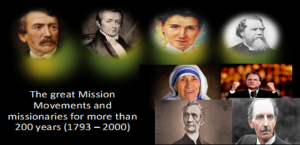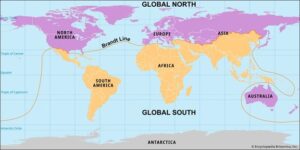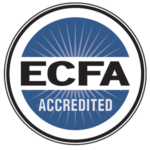Partnering with Native-led Church Movements for Global Impact
The Christian mission landscape is experiencing rapid and unprecedented growth, with new faith communities emerging across the globe. Today, national leaders are at the forefront, championing gospel-centered movements that transform lives and communities. This shift represents a profound opportunity for the global church to support and partner with native-led disciple-making and church-planting movements, acknowledging the transformative work of the Holy Spirit in regions historically less impacted by traditional missions.
The Foundation of Modern Missions
The roots of the modern mission movement trace back to pioneers like William Carey, often called the father of modern missions. Carey arrived in India in 1793 with a vision to spread the gospel and uplift communities. In his lifetime, he not only planted churches but also translated the Bible into multiple Indian languages, established educational institutions, and influenced social reform. His work paved the way for generations of missionaries inspired by his vision of global outreach.
Carey’s legacy inspired a succession of movements throughout the 18th and 19th centuries, with organizations like the Student Volunteer Movement, China Inland Mission, Baptist Missionary Society, and others bringing the gospel to what is now known as the Global South. Through these efforts, mission organizations established churches, promoted social development, and fostered cross-cultural understanding. These pioneers laid a foundation for church growth in the Global South, forming the base for today’s mission efforts.

The Growth of 20th-Century Mission Movements
By the end of the 20th century, the impact of mission work had reached across the globe. These efforts transformed communities, not only bringing faith but also fostering social change, education, and healthcare initiatives. For many communities, missionaries became trusted advocates and partners in development.
While early missions emphasized Western leadership, today’s missions field is marked by a shift towards native-led efforts. The churches planted by early missionaries have grown and matured, and leaders from these communities are stepping forward, equipped to lead transformative faith movements in their cultural contexts.
The Rise of Native-led Movements
Since the beginning of the 21st century, the mission field has been increasingly led by local leaders from the Global South. These leaders are at the helm of over 2,000 Disciple-Making and Church-Planting Movements (DMCP), growing the faith in ways that were unimaginable just decades ago. For instance, one South Asian country that had only a small community of believers in the 1970s now has millions of Christians. In a Middle Eastern country known for its restrictions on religious practice, the church has grown to nearly a million followers, despite persecution and hardship.

These native-led movements are not only more sustainable but are often more effective than traditional mission models. Native leaders possess:
- Cultural Understanding – As insiders, they have an intuitive grasp of cultural beliefs, practices, and challenges.
- Community Trust and Accessibility – They’re part of the community, giving them credibility and allowing them to engage in ways foreign missionaries may not.
- Language Proficiency – Native leaders speak the heart languages of their people, enhancing communication and understanding.
- Cost Efficiency – They work within the economic context of their communities, making their ministry efforts more affordable.
- Sustainability – Native-led efforts often have a long-term vision rooted in local resources and leadership development.
These factors make native leaders uniquely equipped to reach their communities, spreading the gospel in sustainable, impactful ways.
Embracing the Next Movement of the Holy Spirit
The next wave of gospel growth is occurring through various native-led movements like Church Planting Movements (CPM), Disciple Making Movements (DMM), City Gospel Movements (CGM), and the 4-14 Movement. These movements mobilize thousands of believers, many of whom are indigenous to the regions they serve. With nearly a million church planters currently active, these movements are addressing multiple community needs:
- Reaching Unreached and Unengaged Groups – Native leaders are taking the gospel to remote and underserved areas.
- Evangelism and Discipleship – They’re actively involved in spreading faith and nurturing new believers.
- Church Planting and Multiplication – Churches are being established and replicated in a way that promotes growth from within communities.
- Community Transformation – Many movements prioritize social services, such as education and healthcare, reflecting the gospel’s call to holistic service.
The results of these movements are transforming regions worldwide, bringing hope, dignity, and community change through faith. These native-led efforts are not only multiplying believers but also planting a vision of sustainable community leadership rooted in the gospel.
How the Global Church Can Support Native-led Movements
For these native-led movements to continue flourishing, churches in the Global North have an opportunity—and a responsibility—to partner with and invest in them. Financial support, leadership training, strategic planning, and mentoring from experienced mission leaders are critical for the growth of these movements. Here are some ways the Global North can make a meaningful impact:
- Financial Investment – Native-led movements require resources to thrive. Investments from more economically privileged regions can fund training, materials, and support for native church planters.
- High-Quality Leadership Training – Equipping native leaders with leadership skills, theological education, and pastoral training enables them to serve their communities with excellence and integrity.
- Strategic Planning and Development – With guidance in strategic planning, native-led movements can expand their reach and effectiveness, addressing community needs in targeted and impactful ways.
- Mentorship and Coaching – Experienced mission leaders can provide mentorship, helping native leaders navigate the complexities of ministry and develop spiritually, personally, and professionally.
Supporting these native-led movements not only benefits their communities but also builds a stronger, more interconnected global church. Native-led ministries often bring unique perspectives and effective strategies to the mission field, and they are committed to maintaining doctrinal integrity and financial transparency. By partnering with these movements, the church can help spread the gospel in ways that honor and uplift the cultures and communities they serve.
The Call to Partner and Invest
The Great Commission calls all believers to participate in spreading the gospel, and today’s global church has a remarkable opportunity to do so in partnership with native-led movements. By investing in these leaders and their communities, we contribute to a more inclusive, sustainable, and effective mission effort. In a time when barriers once deemed insurmountable are being overcome, churches across the world can unite in prayer, support, and partnership.
Let us embrace this opportunity, giving generously to empower native-led movements and entrusting them to carry forward the gospel with authenticity and dedication. As the global church supports these indigenous efforts, we witness a powerful and transformative movement that has the potential to reach even the most remote and unengaged corners of the world. With collective action and faithful partnership, the mission field will continue to flourish, expanding the reach of the gospel and fulfilling the call to “go into all the world and preach the gospel to all creation” (Mark 16:15).
Mark Visvasam
Director, Global Operations, Global Assist and Asia Team Leader, Movement Day


